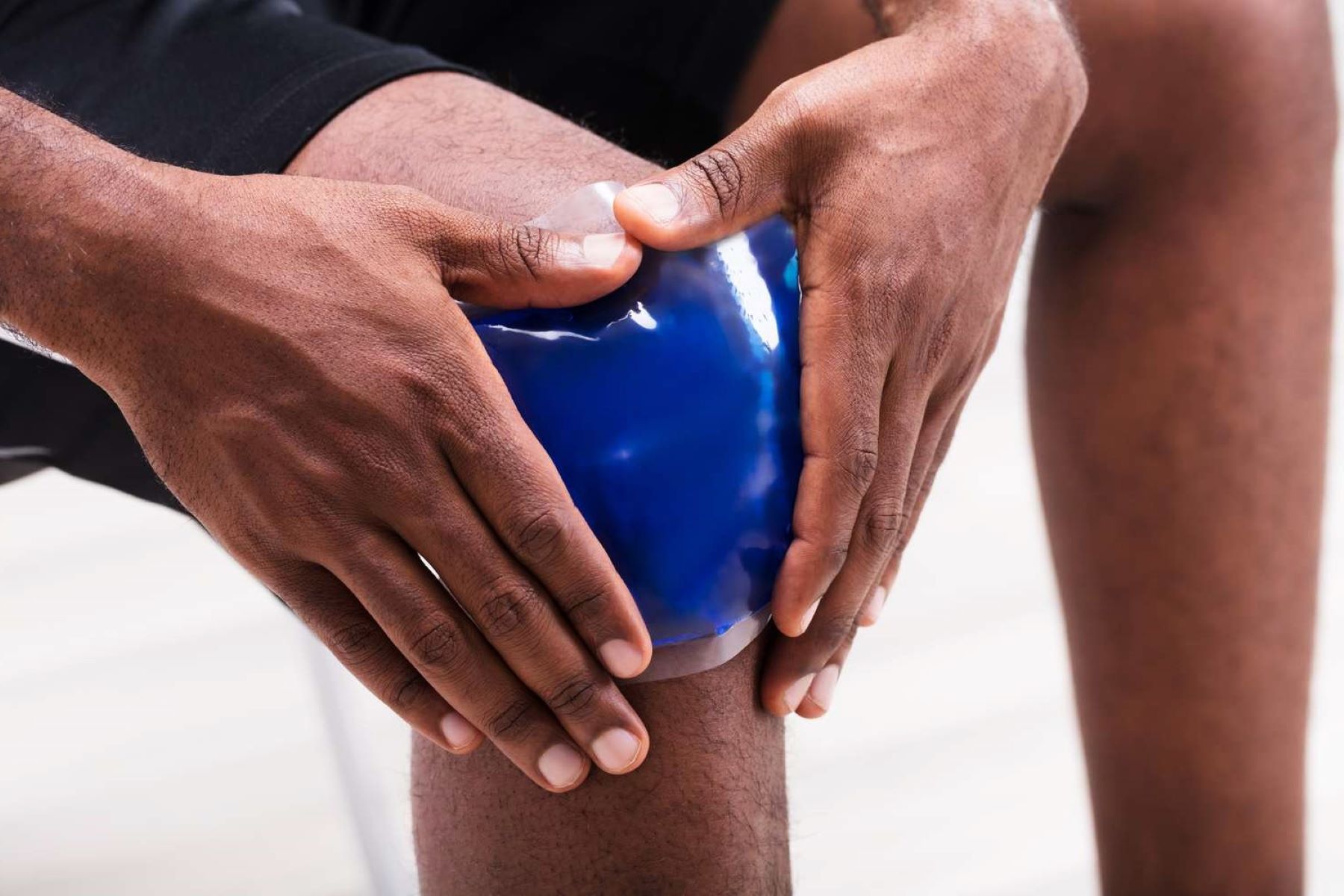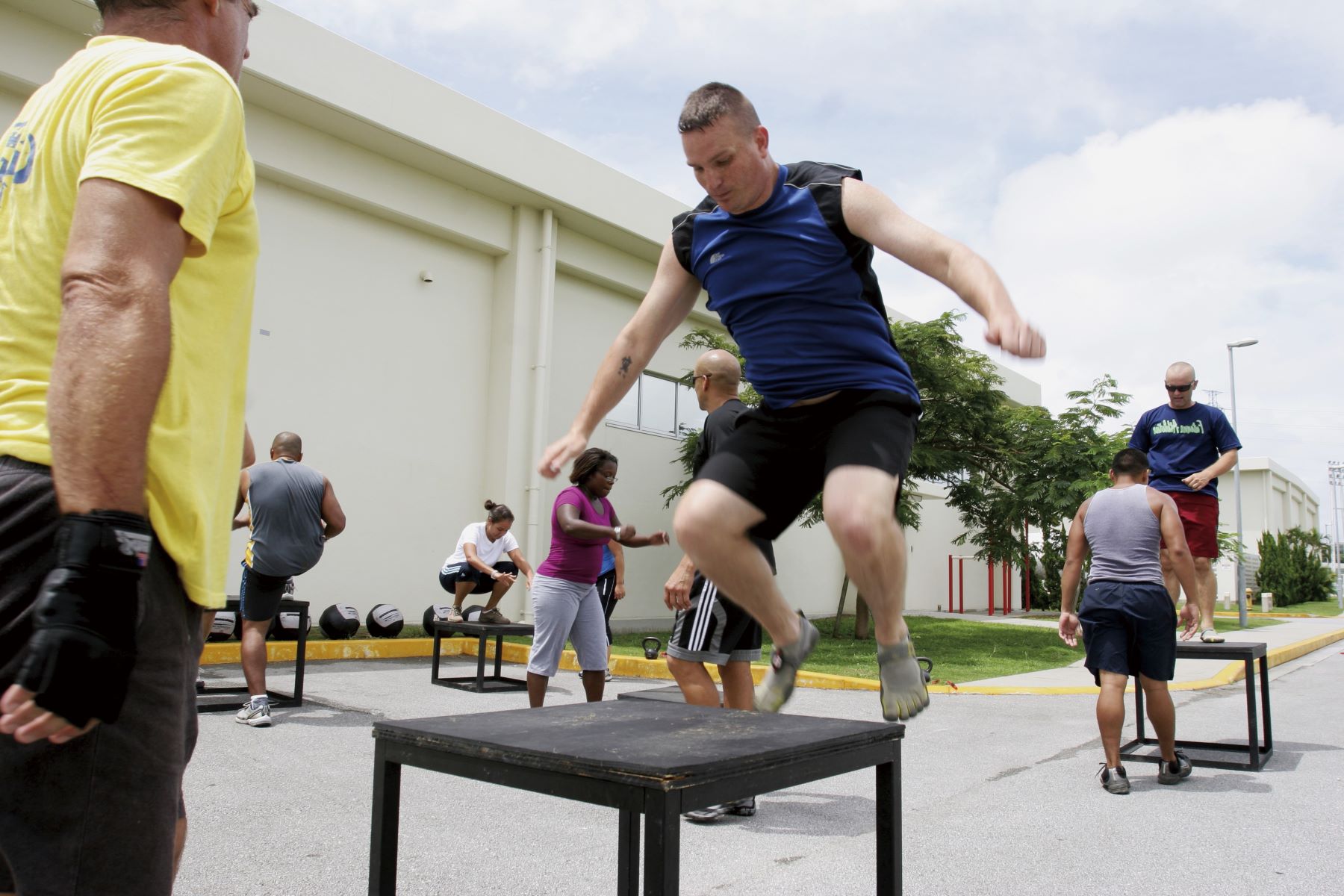Home>Health & Nutrition>Injury Prevention>Should You Ice Before Running: Exploring The Benefits Of Training


Injury Prevention
Should You Ice Before Running: Exploring The Benefits Of Training
Published: February 26, 2024
Discover the advantages of pre-run icing and injury prevention strategies. Learn if icing before running can help reduce the risk of injuries.
(Many of the links in this article redirect to a specific reviewed product. Your purchase of these products through affiliate links helps to generate commission for Therunningadvisor.com, at no extra cost. Learn more)
Table of Contents
Introduction
In the realm of fitness and athletic training, injury prevention is a crucial consideration for athletes and fitness enthusiasts alike. Whether you are a seasoned runner or just starting your journey, the importance of injury prevention cannot be overstated. One common practice that has garnered attention in the running community is the act of icing before a run. This practice is believed to offer benefits such as reducing inflammation and preventing potential injuries. However, the effectiveness of pre-run icing is a topic of debate among experts in the field of sports medicine and injury prevention.
In this comprehensive exploration, we will delve into the science behind icing before running, the potential benefits it may offer, as well as the drawbacks and alternative strategies to consider. By gaining a deeper understanding of this practice, you will be better equipped to make informed decisions about your pre-run routine and optimize your training for peak performance and injury prevention. So, let's lace up our running shoes and embark on this enlightening journey to uncover the truth about icing before running.
The Science Behind Icing Before Running
Icing before running is rooted in the concept of cryotherapy, which involves the application of cold to the body for therapeutic purposes. The rationale behind this practice lies in its potential to constrict blood vessels and reduce blood flow to the targeted area. By doing so, it is believed to decrease tissue metabolism and limit the inflammatory response, ultimately mitigating the risk of injury during physical activity.
When the body is exposed to cold temperatures, the blood vessels in the affected area constrict, leading to a reduction in blood flow. This vasoconstriction is thought to help manage inflammation and swelling, which are common precursors to muscle soreness and injury. Additionally, the application of cold may help numb the area, providing temporary pain relief and allowing individuals to engage in physical activities with greater comfort.
Furthermore, the physiological response to cold exposure includes a decrease in nerve conduction velocity, which can contribute to a temporary reduction in pain perception. This effect may be particularly beneficial for individuals dealing with minor aches or discomfort, enabling them to proceed with their running regimen more comfortably.
It is important to note that the scientific evidence supporting the efficacy of pre-run icing is not definitive. While some studies have suggested potential benefits, others have yielded inconclusive results. The individual response to cryotherapy can vary, and factors such as the duration and intensity of cold exposure, as well as the specific nature of the injury or discomfort, may influence its effectiveness.
In summary, the science behind icing before running revolves around the physiological responses to cold exposure, including vasoconstriction, reduced metabolism, and temporary pain relief. While these mechanisms offer a theoretical basis for the practice, the extent of its effectiveness remains a subject of ongoing research and debate within the sports medicine and athletic communities. As we continue our exploration, we will delve deeper into the potential benefits and drawbacks of pre-run icing, shedding light on the multifaceted considerations that inform this aspect of injury prevention in running.
The Potential Benefits of Icing Before Running
Icing before running is purported to offer several potential benefits that may appeal to individuals seeking to optimize their training and minimize the risk of injury. Understanding these potential advantages can provide valuable insights into the role of pre-run icing in the context of injury prevention and athletic performance.
1. Reduced Inflammation and Swelling
One of the primary perceived benefits of pre-run icing is its ability to mitigate inflammation and swelling in targeted areas. By applying cold to the muscles and connective tissues before engaging in physical activity, individuals aim to limit the inflammatory response that can result from the mechanical stress of running. This reduction in inflammation may contribute to a decreased likelihood of experiencing muscle soreness and discomfort during and after the run, potentially facilitating a more comfortable and productive training session.
2. Pain Relief and Discomfort Management
The temporary numbing effect of cold exposure can provide individuals with relief from minor aches and discomfort, allowing them to approach their running regimen with greater ease. By dulling the sensation of pain in specific areas, pre-run icing may enable individuals to maintain their training intensity and duration without being hindered by transient discomfort. This aspect of pain management can be particularly valuable for individuals dealing with recurring minor injuries or persistent muscle soreness.
3. Potential Injury Prevention
Proponents of pre-run icing suggest that the practice may contribute to injury prevention by preparing the body for the physical demands of running. By reducing tissue metabolism and blood flow to the targeted areas, icing before a run is believed to create an environment that is less susceptible to stress-related injuries. This preventive potential aligns with the overarching goal of injury prevention in athletic training, emphasizing the importance of proactive measures to safeguard the body against the rigors of physical activity.
4. Enhanced Recovery Post-Run
In addition to its pre-run applications, icing may also play a role in post-run recovery. By initiating the recovery process during the pre-run phase, individuals may experience a smoother transition into the post-exercise period, potentially minimizing the extent of muscle soreness and accelerating the overall recovery timeline. This holistic approach to integrating icing into the training cycle underscores its potential to support comprehensive injury prevention and recovery strategies.
5. Psychological Comfort and Confidence
Beyond its physiological effects, pre-run icing may offer psychological benefits by instilling a sense of comfort and confidence in individuals as they prepare for their run. Knowing that they have taken proactive steps to manage inflammation and discomfort through icing, individuals may approach their training with a greater sense of assurance, potentially influencing their overall mindset and performance during the run.
In summary, the potential benefits of icing before running encompass reduced inflammation and swelling, pain relief, injury prevention, enhanced post-run recovery, and psychological comfort. While these perceived advantages underscore the appeal of pre-run icing as a component of injury prevention and training optimization, it is essential to consider the individual variability in response to this practice and the need for a comprehensive approach to injury prevention that encompasses various strategies and considerations.
The Potential Drawbacks of Icing Before Running
While pre-run icing is often touted for its potential benefits, it is important to acknowledge the potential drawbacks and considerations associated with this practice. Understanding the limitations and potential adverse effects of icing before running is crucial for individuals seeking to make informed decisions about their injury prevention strategies and training routines.
1. Impaired Muscle Function
One of the primary concerns related to pre-run icing is the potential impact on muscle function. Cold exposure can lead to temporary stiffness and reduced muscle elasticity, which may compromise the dynamic capabilities of the muscles during running. This impairment in muscle function could affect performance and increase the risk of injury, particularly in situations where optimal muscle flexibility and responsiveness are essential for safe and effective running.
2. Masking Pain Signals
The numbing effect of cold exposure can mask pain signals, potentially leading individuals to overlook underlying issues or discomfort that may warrant attention. By dampening the sensation of pain, pre-run icing may obscure important signals that could indicate the need for modified training approaches or targeted interventions to address underlying musculoskeletal issues. This masking of pain signals could inadvertently exacerbate existing problems or lead to the neglect of necessary adjustments in training regimens.
3. Delayed Warm-Up Effect
Applying cold to the body before running can impede the natural warm-up process, which is essential for preparing the muscles and connective tissues for physical activity. A delayed warm-up effect resulting from pre-run icing may hinder the body's ability to achieve optimal performance and increase the risk of injury during the initial stages of the run. This delayed readiness could compromise the overall quality of the training session and limit the body's ability to adapt to the demands of running.
4. Individual Sensitivity and Response
The response to pre-run icing can vary significantly among individuals, with some experiencing heightened sensitivity to cold or adverse reactions to prolonged cold exposure. Factors such as skin sensitivity, circulation patterns, and individual tolerance levels can influence the overall experience and effectiveness of pre-run icing. It is essential to recognize that not all individuals may derive the anticipated benefits from this practice, and some may even experience discomfort or adverse effects that detract from the intended outcomes.
Read more: Why You Should Give Track Running A Shot
5. Potential Distraction and Discomfort
The process of applying and maintaining cold packs or ice treatments before running may introduce a level of distraction and discomfort for individuals, particularly in situations where logistical challenges or environmental factors come into play. This potential distraction could detract from the mental focus and readiness required for effective running, highlighting the need to weigh the practical aspects of pre-run icing against its perceived benefits.
In summary, the potential drawbacks of icing before running encompass impaired muscle function, the masking of pain signals, delayed warm-up effects, individual sensitivity and response, and potential distraction and discomfort. These considerations underscore the multifaceted nature of pre-run icing and emphasize the importance of evaluating its potential drawbacks alongside its perceived benefits. By recognizing the nuanced implications of this practice, individuals can make informed decisions that align with their unique needs and training objectives.
Alternatives to Icing Before Running
Exploring alternatives to pre-run icing presents individuals with a diverse array of strategies and approaches to support injury prevention and optimize their running experience. By considering alternative methods that complement or diverge from the practice of icing before running, individuals can tailor their injury prevention strategies to align with their unique needs and preferences. Here are several alternatives to pre-run icing that merit consideration:
1. Dynamic Warm-Up Routines
Engaging in dynamic warm-up routines before running can serve as a proactive alternative to pre-run icing. Dynamic warm-ups involve performing a series of active movements and exercises that target the muscles and joints, gradually increasing blood flow and body temperature. This approach helps prepare the body for the specific demands of running, enhancing muscle flexibility, joint mobility, and neuromuscular activation. By incorporating dynamic warm-up routines into their pre-run regimen, individuals can optimize their physical readiness and reduce the risk of injury without relying solely on the application of cold.
2. Foam Rolling and Self-Myofascial Release
Foam rolling and self-myofascial release techniques offer an alternative avenue for preparing the muscles and connective tissues before running. By using foam rollers or specialized massage tools, individuals can target areas of muscular tension and adhesions, promoting improved tissue elasticity and range of motion. This approach can help alleviate muscle tightness and enhance muscular readiness for running, complementing the objectives of injury prevention and performance optimization. Incorporating foam rolling into the pre-run routine can provide individuals with a proactive means of addressing muscular imbalances and promoting overall musculoskeletal health.
3. Active Stretching and Mobility Exercises
Integrating active stretching and mobility exercises into the pre-run routine can contribute to enhanced flexibility and joint mobility, supporting the body's readiness for running. Active stretching involves performing controlled movements that elongate and activate the muscles, promoting improved range of motion and functional flexibility. By incorporating targeted mobility exercises that address specific areas of concern, individuals can address muscular tightness and imbalances, fostering a more conducive environment for injury-free running. This alternative approach emphasizes the proactive engagement of the musculoskeletal system, aligning with the overarching goal of injury prevention and performance optimization.
4. Gradual Progression and Periodization
Embracing a philosophy of gradual progression and periodization in training can serve as an alternative strategy to pre-run icing. By gradually increasing training intensity, duration, and volume over time, individuals can allow their bodies to adapt to the demands of running while minimizing the risk of overuse injuries. Periodization involves structuring training cycles to incorporate varying levels of intensity and recovery, promoting sustainable athletic development and injury prevention. This approach emphasizes the importance of strategic planning and balanced progression, offering a holistic alternative to the singular focus on pre-run icing as a means of injury prevention.
5. Consultation with a Sports Medicine Professional
Seeking guidance from a sports medicine professional or physical therapist can provide individuals with personalized insights and recommendations tailored to their unique physiological characteristics and training objectives. A comprehensive assessment by a qualified professional can uncover specific areas of concern, potential imbalances, and individualized strategies for injury prevention. This alternative approach emphasizes the value of personalized guidance and evidence-based interventions, empowering individuals to make informed decisions about their injury prevention strategies and training regimens.
Incorporating these alternatives into the pre-run routine can expand the repertoire of injury prevention strategies available to individuals, fostering a comprehensive and tailored approach to optimizing their running experience. By exploring diverse methods that align with their individual needs and preferences, individuals can cultivate a proactive and multifaceted approach to injury prevention, enhancing their overall well-being and performance as runners.
Conclusion: Making the Right Choice for Your Training
In the realm of injury prevention and athletic training, the decision-making process is a dynamic and multifaceted endeavor. As individuals navigate the landscape of pre-run strategies and injury prevention techniques, they are presented with a diverse array of options, each carrying its own set of potential benefits and considerations. The exploration of pre-run icing, its potential benefits, drawbacks, and alternative approaches, underscores the complexity of this decision-making process and the need for informed and personalized choices.
When considering the integration of pre-run icing into their training regimen, individuals are encouraged to approach this decision with a discerning mindset, taking into account their unique physiological responses, training objectives, and preferences. While pre-run icing may offer potential benefits such as reduced inflammation, pain relief, and injury prevention, it is essential to weigh these perceived advantages against the potential drawbacks, including impaired muscle function and delayed warm-up effects. Moreover, the individual variability in response to pre-run icing underscores the importance of considering alternative strategies such as dynamic warm-up routines, foam rolling, active stretching, and gradual progression in training.
Making the right choice for one's training involves a thoughtful evaluation of the available options, informed by an understanding of the body's response to different injury prevention techniques and the alignment of these strategies with one's training goals. It is crucial for individuals to recognize that the effectiveness of injury prevention strategies, including pre-run icing, is influenced by a multitude of factors, including individual physiology, training intensity, and the specific nature of running-related discomfort or concerns.
Ultimately, the right choice for one's training hinges on a balanced and comprehensive approach to injury prevention, encompassing a diverse array of strategies that collectively support the body's readiness for running. By embracing a holistic perspective that integrates pre-run techniques with dynamic warm-up routines, targeted mobility exercises, and personalized guidance from sports medicine professionals, individuals can cultivate a proactive and tailored approach to injury prevention, optimizing their running experience while minimizing the risk of potential injuries.
As individuals embark on their running journey, the pursuit of injury prevention and training optimization is a dynamic and evolving process. By embracing an informed and adaptable mindset, individuals can navigate the spectrum of injury prevention strategies, making choices that resonate with their unique needs and aspirations as runners. In this pursuit, the integration of pre-run icing and alternative approaches serves as a testament to the nuanced and individualized nature of injury prevention, empowering individuals to make the right choices for their training and well-being.












